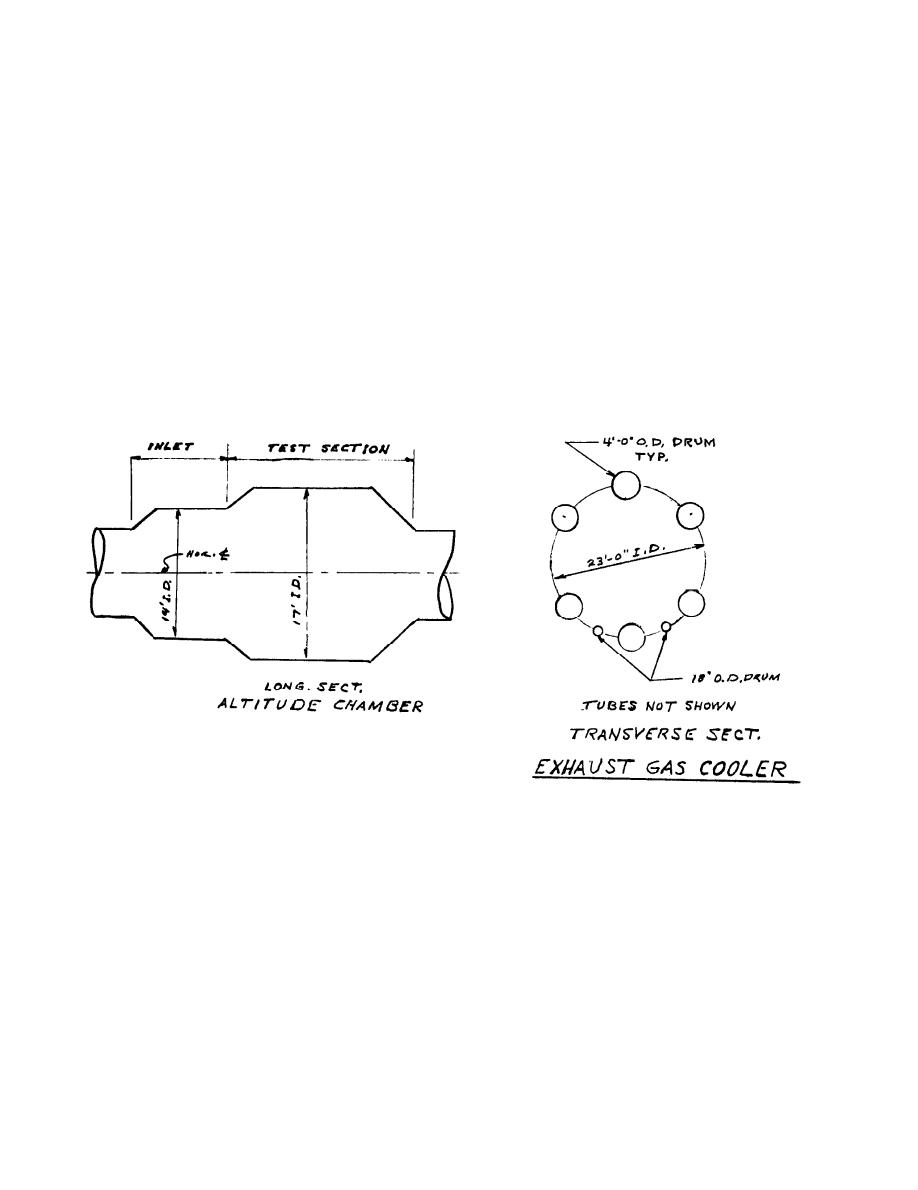

Custom Search
|
|

|
||
 The total weight of filler material was insignificant. A hydrostatic test
was then successfully performed separately on the altitude chamber and the
cooler. Testing went smoothly except that initially the inflated rubber
gasket that sealed the altitude chamber door was pushed out, dumping several
hundred gallons of warm water. This was caused by insufficient attention to
detail. The pressure in the gasket was twice the test pressure that the
vessel was to be subjected to and it was assumed that the gasket would stay in
place. Actually, the internal pressure was more than enough to overcome the
wet frictional resistance of the pressurized gasket. When the gasket was
reinstalled, it was supported by a retainer placed for the test, and no
further difficulties were encountered.
Pneumatic testing also would have been feasible because the stored energy
was greatly reduced by the volume occupied by the glass foam, but the hydro
test was considered safest. The glass foam was virtually undisturbed and the
contractor was able to sell it back to the supplier.
Fig. 1
Fig. 2
15
|
 
|
|
 |
||